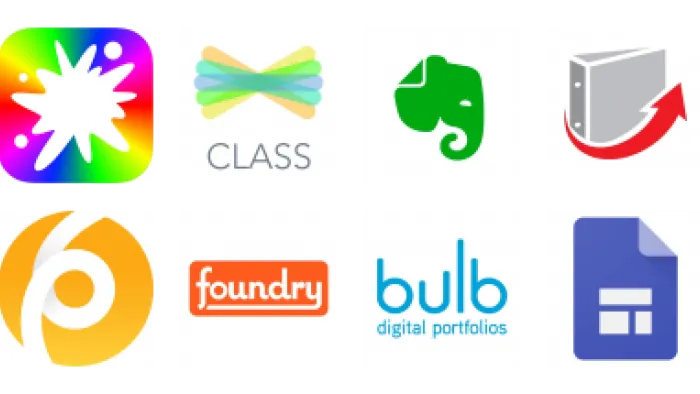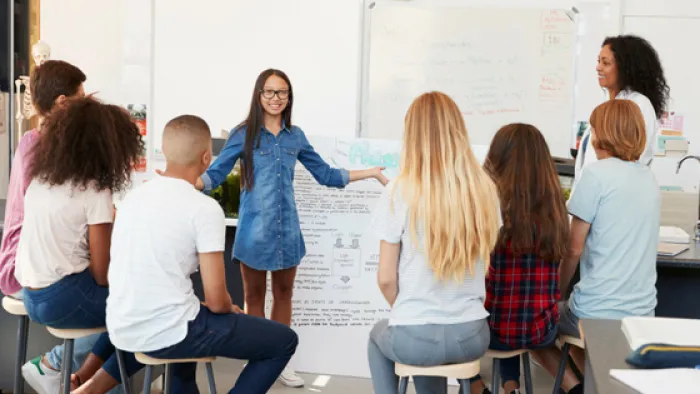Holistic portfolios allow students to showcase all the best traits and qualities of themselves.

Student portfolios (especially digital versions) are a great idea. By providing the time and the means for students to collect things that document their challenges and successes, students become more metacognitive and invested in their growth and learning. However, the reality for many students (and teachers) is that portfolios have become a chore, a stale exercise -- but it doesn't have to be this way.
A few years ago, after hearing students' groans every time I mentioned the word "portfolio," I started to think wistfully of the days when students would actually get excited about the task. They would ask me or other students things like:
Should I include this in my portfolio? This isn't specifically about reading, but it relates to a book I read. Does that work for my portfolio? I did such a bad job on this. I'm keeping it in my portfolio to show my old self how far I've come.
Through some simple changes, we can recapture the magic. We can ensure that portfolios live up to their promise, and most importantly, we can help students see them as useful, personalized learning tools that are uniquely theirs.
Here are four tips for making student portfolios more meaningful.
1. Make time for the reflective process.
Schools generally acknowledge the importance of reflective practices such as portfolios, but at the end of the day, content and skills usually trump everything else. Teachers are under enormous pressure in these areas and often feel hard-pressed to find the time for portfolios. However, for students to produce a meaningful portfolio, we need to commit time to the reflective process that is consistently implemented.
Once time is provided to work on portfolios, educators should ensure students engage with some aspect of the portfolio process. If we simply say, "Work on your portfolios," we are almost guaranteed to be disappointed by the results. To achieve a better result, consider mixing things up. Try the following:
- A conference with students individually or in small groups
- A peer conference
- A brainstorming session
- Students writing a reflection about their progress
2. Create one portfolio that addresses the whole student.
Portfolios can, and should, be about the whole student, not only English or math class. Our students are athletes, community activists, actors, and artists. They should be able to create one portfolio that reflects all those things, and it shouldn't necessarily be limited to school. Encourage students to include:
- Films they make for fun with friends
- Music and songs they record
- Fan fiction, stories, and poetry they write outside of school
- Community service and athletic accomplishments
Artifacts that students create outside of school employ the same skills we work so hard to help them develop in our classes (and many times are great applications of what we've taught them), so why exclude those things from a portfolio? We can and should encourage students to include the things they're passionate about. This type of portfolio reinforces the idea that what they create is theirs and not merely something we make them do.
3. Provide guidelines that encourage thoughtful choices.
Encourage students to choose portfolio artifacts that are reflective of their school and home lives, but make sure there are basic guidelines to help ensure that portfolios accomplish the academic purpose. Guidelines should be clear and include basic criteria such as:
- Subjects that must be represented (all? Core? Arts?)
- Minimum and maximum number of pieces
- Inclusion of appropriate content (subject matter/topic/language)
4. Add variety to make portfolios pop.
One reason students bemoan the portfolio process is that they're asked to do the same types of things in every class to get their portfolios "ready." We can't expect to ask students to select "two pieces you're really proud of" at the last minute and expect them to be enthusiastic. Instead, we need to vary what we do (and what we ask them to do) with their portfolios just like we would with other activities in our classes. This type of coordination is perfect for team or grade-level planning -- consider posting ideas on a calendar so teachers can roll them out on a schedule as the year unfolds. Consider encouraging students to create and include artifacts such as:
- Struggles or challenges you have faced this year
- Artifacts that show growth
- Ways in which you have progressed this year
- Videos in which students showcase things they've done
- Demonstrations of newly developed skills (video work, photographs, other)
- "Lessons" in which students teach a skill
- Artifacts from outside of school that show application of school-related skills
- Artifacts of collaboration or independence
- Videos that address a student's future self
The key to a great student portfolio is balance -- students should have as many opportunities to express their reflective sides as they do their academic ideas. If we don't get creative in how we approach our practice around portfolios, we can never expect students to sustain their interest. In the process, we will lose out on a valuable and personalized learning tool.








